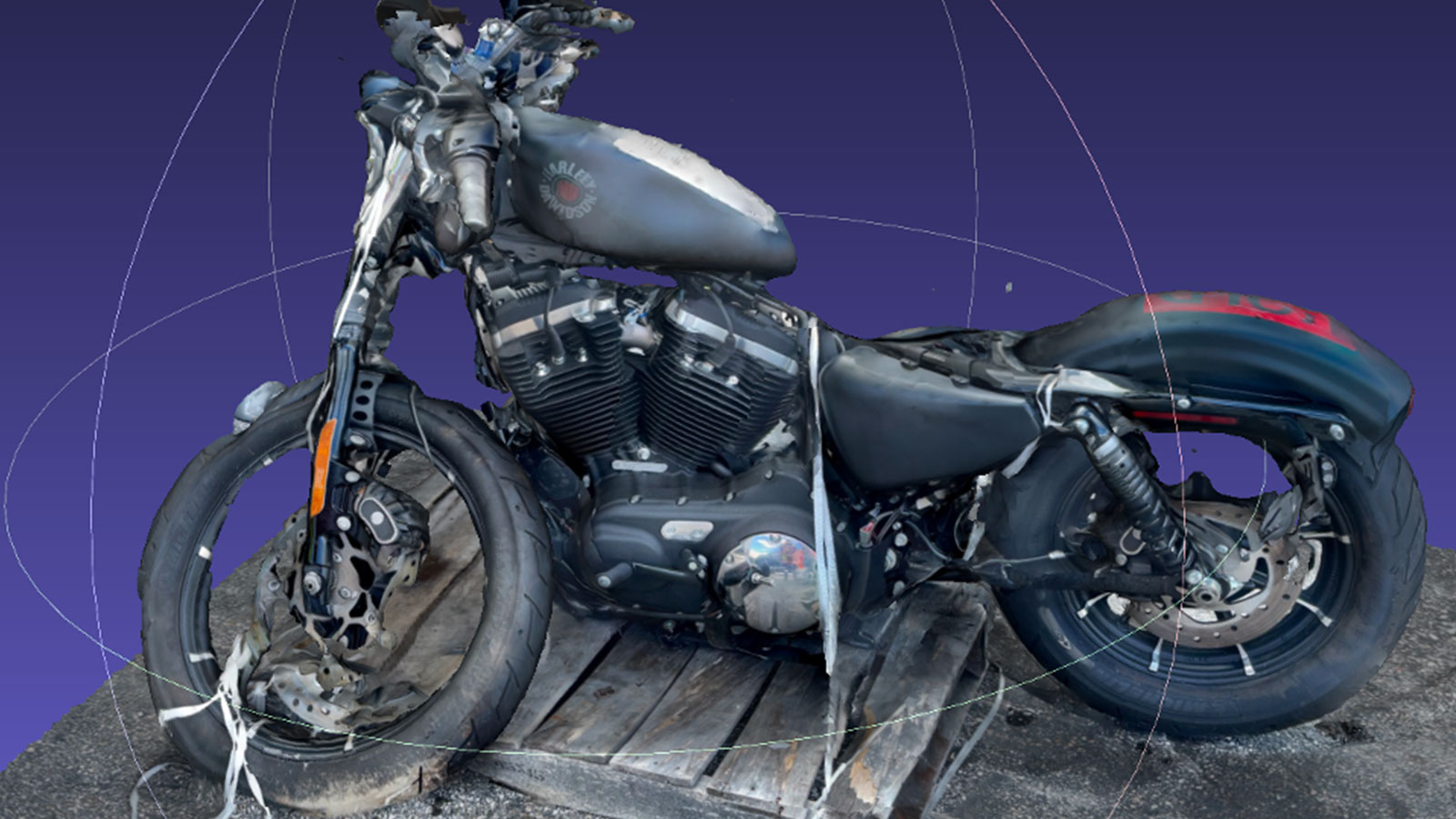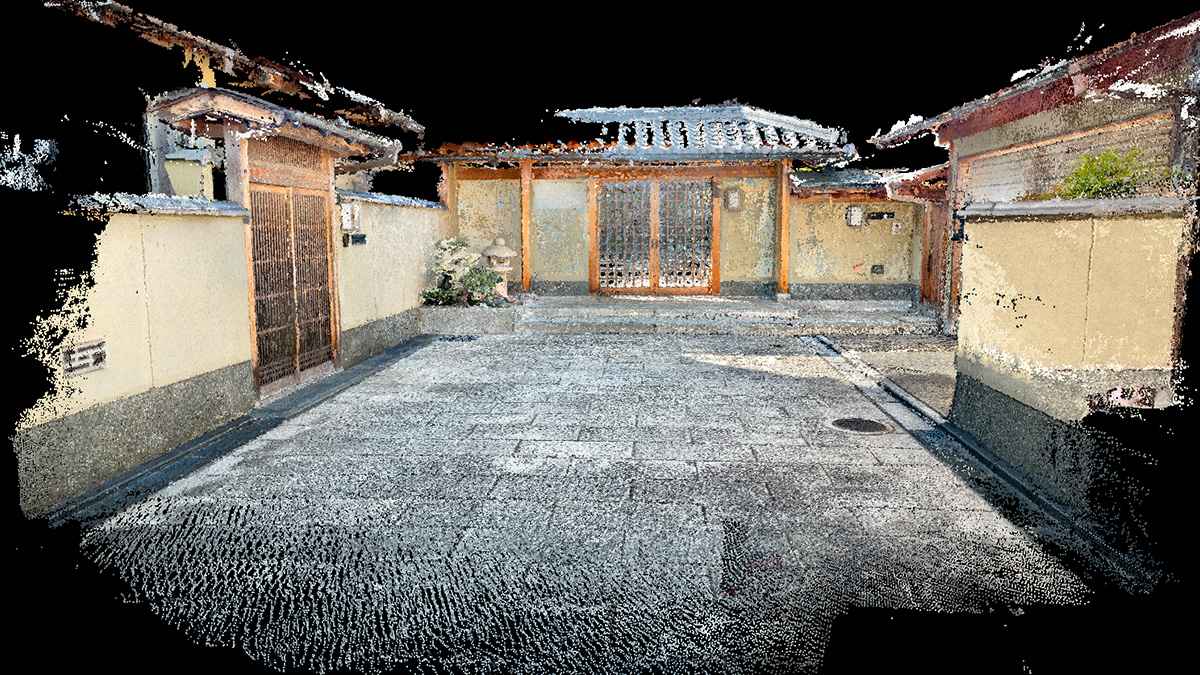Investigating crashes 4 times faster with PIX4Dmatic
The field of accident reconstruction is critical to analyzing why a crash happened and how similar accidents could be prevented in the future. As part of their crash analysis, many professionals now perform 3D accident reconstructions. A 3D model of a crash scene can be used by the police, insurers, and by experts to investigate vehicle collisions.
Crash reconstruction in the courtroom has evolved from hand-drawn sketches on blackboards to low-fidelity, basic animations, to high quality video recreations that represent real-time accounts of an accident. These 3D accident reconstructions are used to show juries exactly what happened during a crash sequence. Recent advances in computer technology, including Pix4D software’s evolution, allow experts to produce quality reconstructions that can be presented in the courtroom from multiple perspectives. This improves the jurors’ understanding as to the cause of a crash and helps them to reach a fair decision in legal proceedings.
A career in collision reconstructions
John Lloyd has a Ph.D. in Human Factors with a specialization in biomechanics. He began his career researching traumatic brain injuries, of which automobile and motorcycle crashes are the leading cause, before becoming a certified accident reconstructionist. With his unique skill set, Dr. Lloyd can analyze a crash and the injuries sustained by vehicle occupants from start to finish. Based in Florida, his expertise in 3D accident reconstruction is called upon across North America. Dr. Lloyd specializes in motorcycle collision reconstructions and also works on automobile, truck, bicycle, and pedestrian collisions.
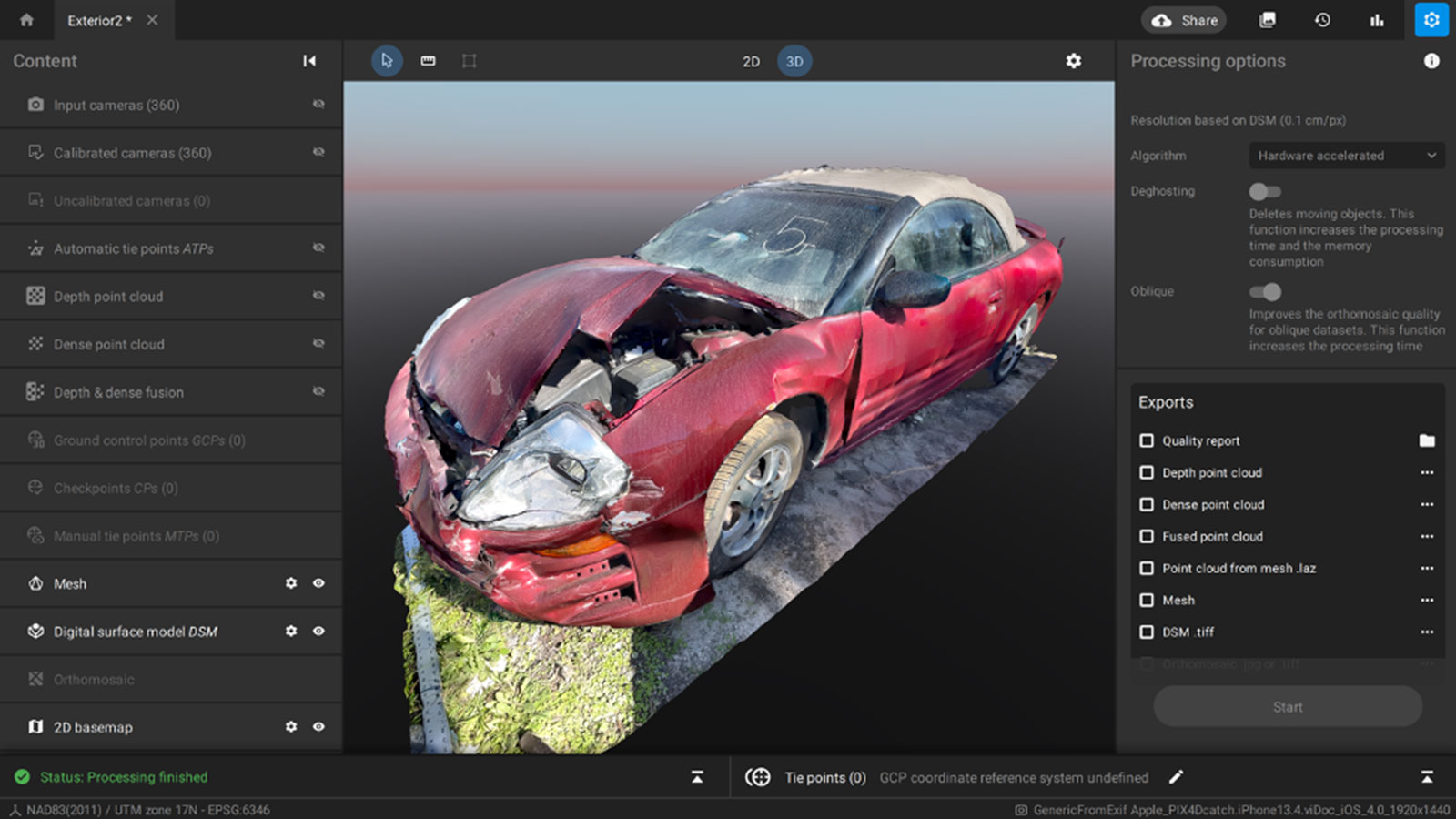
How can photogrammetry be used for crash reconstruction?
Using photogrammetry, crash scenes can be recreated in 3D with a high degree of accuracy. Crash reconstructions can be produced with exceptional detail, which is now the expected norm in litigation. Dr. Lloyd discovered the use of drones and photogrammetry for accident scenes about 5 years ago when he acquired a Phantom 4 Pro.
In 2022 Dr. Lloyd attended the Pix4D User Conference in Denver where he learned about the PIX4Dcatch and PIX4Dmatic software, which he added to his Pix4D portfolio that already included PIX4Dmapper.
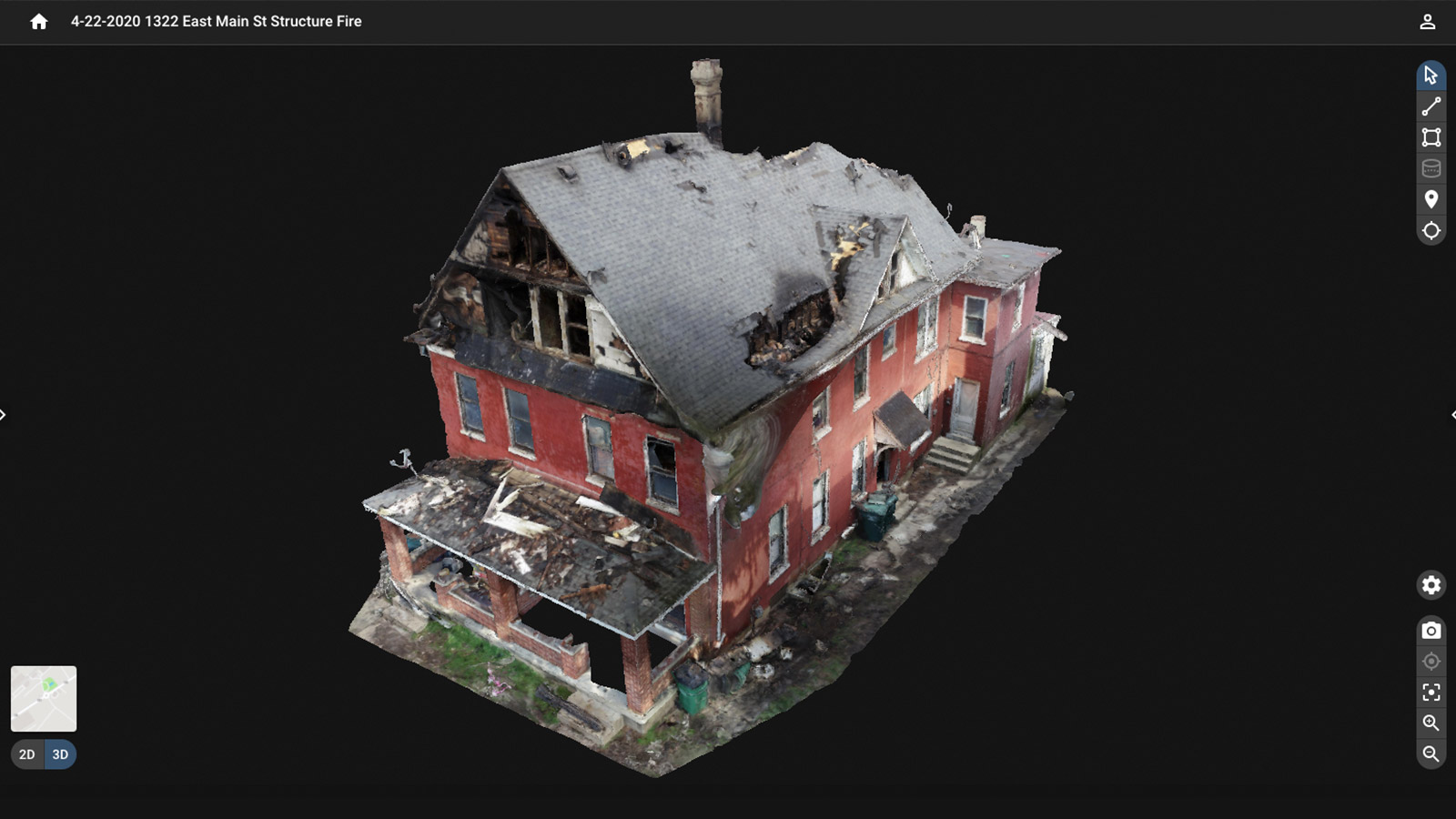
RTK geotags data that is collected with the scanning app PIX4Dcatch. As a result, sub-centimeter accuracy is brought to photogrammetry projects captured on mobile phones or iPads. When paired with iOS devices equipped with LiDAR sensors, RTK and PIX4Dcatch create a unique workflow that combines LiDAR, GNSS, and photogrammetry.
“I was excited about the advent of LiDAR capabilities incorporated into the iPhone 12, which opened up incredible opportunities for 3D scanning of objects, including crashed vehicles. Now, with RTK devices, I can create detailed 3D models with my mobile device and can also mark Ground Control Points (GCPs) to ensure the accuracy of my crash scene mapping projects using drones,” explains Dr. Lloyd.
PIX4Dmatic is a high-powered desktop photogrammetry software that processes data captured with PIX4Dcatch with RTK or aerial drone flights. PIX4Dmatic was launched in 2020 and is significantly faster than many other photogrammetry software options on the market. Since purchasing it, Dr. Lloyd found it has improved his processing speed by a factor of four. PIX4Dmatic also has built-in de-ghosting and sky-filtering options to allow users to edit their outputs and tidy up any unnecessary noise in the point cloud.
Project details
| Location | Florida |
| User | Dr. John Lloyd |
| Area surveyed | 6.5 acres |
| Hardware | <a href=iPhone 12 Pro Max Phantom 4 Pro |
| Software | PIX4Dcatch PIX4Dmatic |
| Processing time on highest settings | 12 hours |
| Processing hardware | Gen Intel i9-12950HX with 128GB NVIDIA RTX A5500 16GB GPU |
| Number of images | 940 |
| GSD | 0.7 cm |
Investigating a motorcycle crash
Dr. Lloyd was retained by an attorney to investigate a motorcycle crash. He was asked to produce a highly accurate 3D map of the crash site, to create a physics-based reconstruction of the accident itself, and analyze factors that could have caused the motorcycle crash.
The first step in the crash analysis and reconstruction was to visit the accident location. It was an urban area with changes in elevation and curves in the roadway. The road was a busy thoroughfare, adding to the complexity of the project. To fully understand the crash, Dr. Lloyd needed to create an accurate 3D map of the scene.
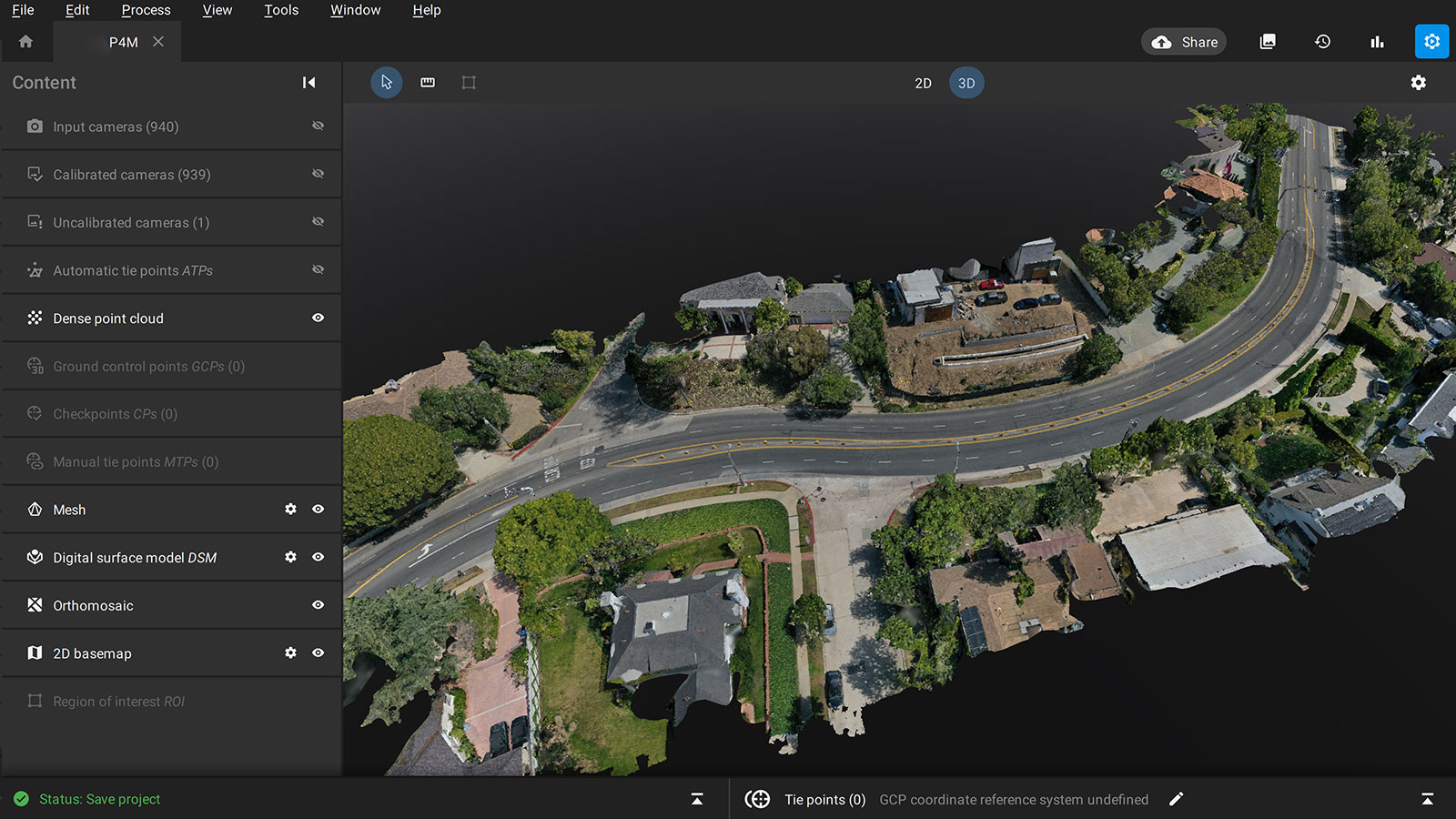
There are several challenges facing accident reconstructionists. These include:
- Moving and/or stopped vehicles
- Pre-crash motion of the vehicles typically covers a large area
- Time pressure to produce results quickly
In this case, Dr. Lloyd needed to acquire data whilst the road was in use, with the traffic still moving. This can cause “ghosts” on the photogrammetry outputs which he could easily remove using specialized PIX4Dmatic deghosting tools during processing.
Dr. Lloyd gathered aerial data with a drone whilst he digitized the motorcycle itself using PIX4Dcatch. As he moved around the crash scene, he used the RTK to mark GCPs to ensure the accuracy of the overall project during processing.
Recreating a motorcycle crash in 3D
For work that is going to be used in court, accuracy is paramount. Whether it is a helicopter accident or a multi-vehicle crash, these projects require a small ground sampling distance (GSD) which produces a highly accurate, detailed 3D map. This is because a small GSD includes more details, which in turn creates more automatic tie points in the reconstructions but can require longer processing times. In the past, Dr. Lloyd processed crash scenes with PIX4Dmapper, which could take up to 3 days to complete. However, with the advanced processing speeds of PIX4Dmatic, he cut his photogrammetry processing time on the highest settings down to just 12 hours.
style="max-width: 600px; margin-bottom: 1px">
Once the data is processed, Dr. Lloyd does his post-processing editing. Off-ground points in the point cloud that had been generated by vehicles waiting at a nearby red light had to be deleted. He then used the de-ghosting filter in PIX4Dmatic to remove cars or their shadows from the orthomosaic tiles. In the past, this had to be done by manually editing the TIFF files in Photoshop, so the automated tool is a huge time saver.
Prior to using photogrammetry, Dr. Lloyd relied various methods to validate his scene reconstruction accuracy - including a roller wheel and a total station to measure the distance between reference points. Using an RTK device with PIX4Dcatch, the GCPs were easily marked and accurate to less than a centimeter. As a result, the accuracy validation process for the 3D crash reconstructions has been streamlined and saves Dr. Lloyd time in the field. In addition, PIX4Dmatic makes it very easy to mark GCPs in the software thanks to its intuitive workflow.
Using PIX4Dcatch with RTK and PIX4Dmatic for crash reconstructions
This new workflow has made a huge difference to Dr. Lloyd’s crash reconstruction projects. He used to split his time equally between processing a scene and crash analysis. With PIX4Dmatic, processing times have been reduced by 80%, meaning he can sometimes complete data collection and scene processing on the same day.
Crash reconstruction is a time-consuming process. Saving time cannot come at the expense of accuracy. With PIX4Dcatch with RTK and PIX4Dmatic, Dr. Lloyd can save time and provide results that set him apart from his competitors.
“Pix4D applications allow me to generate high-resolution crash reconstructions from accurate 3D environments that help me to stand out from others in my field and wow my clients”.John Lloyd, Ph.D.
Accident reconstruction is a key element of public safety operations and is used by police officers and investigators worldwide to analyze crash scenes. Specialists such as Dr. Lloyd can work with official bodies or be hired by litigators to figure out what happened in an accident and use 3D reconstructions to understand all the factors that led to the accident - and how it can be prevented in the future.

